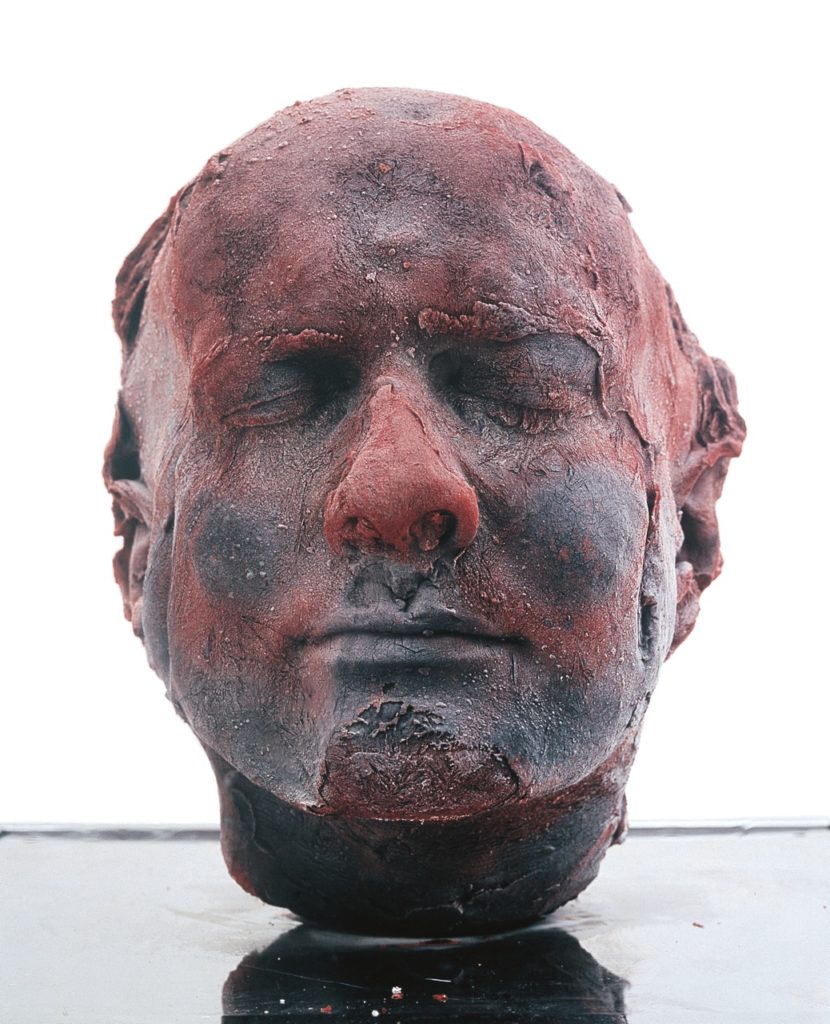Art and Apologetics
“Self, 1991”, Marc Quinn at the Yale Center for British Arts, 2022
British artist, Marc Quinn, began a series of self-portraits comprised of his blood in 1991, and creates a new blood-head every five years. He makes a mold of his head, fills it with 10 pints of blood (roughly the amount in a human body) and deep-freezes it for gallery exhibitions. While on display, the piece sits on a freezing unit to keep the mold cold. Quinn’s 1991 self-portrait was re-cast and on view at the Yale Center for British Art, New Haven, Connecticut this past summer (2022).
This particular artwork helps us identify some of the problems with a view that has become increasingly prevalent in Western society: the philosophy of naturalism. Naturalism is a philosphy which claims nature is all there is. On this view, there is no spiritual dimension to life; we are just matter in motion and the result of chemical processes. Someone who subscribes to naturalism rejects the idea of God, heaven, the soul, moral absolutes, etc. There is only the material stuff of the universe and that’s all we have to work with.
The title “Self” tells us a lot about Quinn’s personal beliefs. Marc Quinn seems to believe in naturalism, and we can infer from other pieces of his work that he has strong faith in the theory of human evolution and in man’s ability to construct morality on his own terms.
For many art curators, Quinn’s use of his own blood makes his self-portrait truer than typical self-portraits since it contains fluid from the artist’s body containing his genetic information. Such interpretations assume the “self” is identical to the blood. Now we have to ask the tough questions. Is Quinn identical to his blood? Is his “self” actually deep-frozen in the mold?
Of course, blood is essential to life, but when Quinn has his blood drawn (it takes several months to collect the needed amount) for his art project, he is not any less Marc Quinn than he was before the bloodletting began. Surely, we can see that Marc Quinn was not passed through the plastic tubing into the bag, nor has Marc Quinn, as such, been deep-frozen in the casting process. But the title suggests Quinn’s entire “self” is contained in his blood. Interestingly, the concept of the “self” is immaterial, an idea. We cannot hold a “self”, place it in a test tube, or dissect it in a lab. Thus, the concept signified by the title cannot be explained by any physical object.
From the blood-head alone, we know nothing about Marc’s passions, pursuits, or thoughts, his loves, memories, knowledge, etc. Undoubtedly, DNA contains an enormous amount of information (30,000 genes have been identified by the Human Genome Project so far) but the genes code for traits such as eye color, hair color, and even the ranges for certain predispositions to illnesses, such as the risk for Type 2 Diabetes and other diseases. The blood doesn’t code for all the information in Quinn’s mind, so it follows he is more than his blood.
One of the most fascinating things about Quinn’s self-portraits is that he continues to make a new one every 5 years and gives it the same title. That he continues to call the heads “Self” evidences the sameness of self over time, which is a phenomenon Christian apologists point to as evidence for the human soul. If Quinn’s self was wholly contained in his blood from 1991, then how would different pints of blood drawn every 5 years continue to *be* that same self? If Quinn’s view was correct and the self truly was contained in the blood, then he would have a new self every time his blood replenished! But he’s the same Marc Quinn now that he was when he first created “Self, 1991”. And he will continue to remain Marc Quinn from year to year, despite the production of new blood cells. The unifying principle of Quinn’s self (the soul) is not identical to the blood.
Christians, of all people, should be the ones proclaiming the truth about the human person. Author and theologian, Anthony A. Hoekema, describes a human person as a psychosomatic unity. Humans are not pieces and parts but whole persons created in God’s image (Gen. 1:27). We are embodied souls with roughly 10 pints of blood running through our physical veins, but the “self” transcends the blood. Thankfully, the implication of Quinn’s title for the human person is inaccurate and even if a museum gallery had a power outage and “Self” thawed and ran red all over the gallery floor, Marc Quinn, himself, could simply fill another mold and stick it in the freezer.
